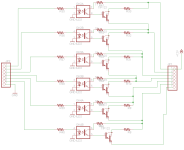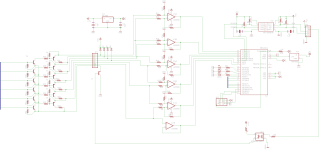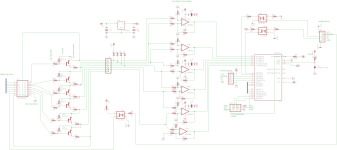Ok so in search of a easier way to manage lipo batteries, I have decided to design my own bms system. I would like to get a production run done of some nice smd boards.
So pretty much looking for how many people would be interested in purchasing.
What each board would do is have a read out of the individual cell voltage to 10bit. 6 cells per board. The output on each board will be a isolated i2c interface allowing up to 128 boards on the same 2 i2c wires. The i2c address and firmware will be programmed via a spi adapter.
There will be a expansion port to connect a cell balancer for people who want to shunt the cells while bulk charging. This will be controlled by the isolated i2c inteface as well.
The boards will be controlled by a atmega (arduino compatible), that will combine the cell readouts from all the boards and enable shunting, cut charging, alarm on low voltage etc.
A optically isolated mosfet will control the power of the circuit. So the circuit will be fully powered off when not in use.
The point of the i2c interface is to go digital and verify that all cells are reading proper, if any cells are wildly out of range, we know that something is wrong and to abort the charge, or alarm on low volt.
So just tossing around some ideas, I will post some schematics if people are interested.
So pretty much looking for how many people would be interested in purchasing.
What each board would do is have a read out of the individual cell voltage to 10bit. 6 cells per board. The output on each board will be a isolated i2c interface allowing up to 128 boards on the same 2 i2c wires. The i2c address and firmware will be programmed via a spi adapter.
There will be a expansion port to connect a cell balancer for people who want to shunt the cells while bulk charging. This will be controlled by the isolated i2c inteface as well.
The boards will be controlled by a atmega (arduino compatible), that will combine the cell readouts from all the boards and enable shunting, cut charging, alarm on low voltage etc.
A optically isolated mosfet will control the power of the circuit. So the circuit will be fully powered off when not in use.
The point of the i2c interface is to go digital and verify that all cells are reading proper, if any cells are wildly out of range, we know that something is wrong and to abort the charge, or alarm on low volt.
So just tossing around some ideas, I will post some schematics if people are interested.






